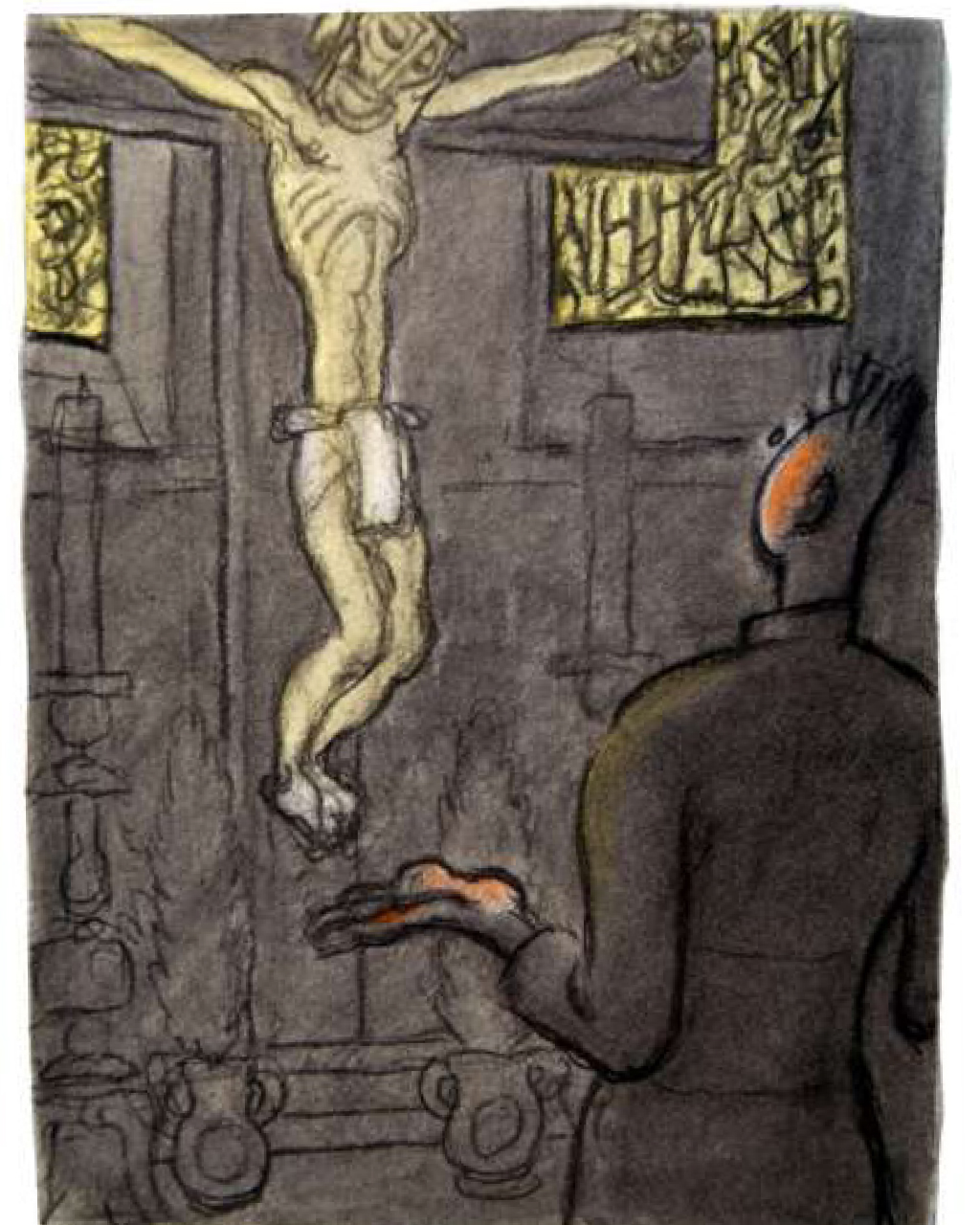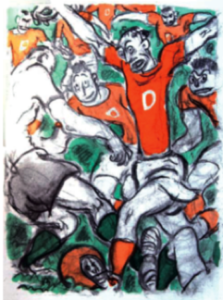Guf Bofa alias Gustave Blanchot

Gus Bofa (Gustave Blanchot) was born in Brive-la-gaillarde, France, in 1883. From 1900, he started selling his first illustrations to magazines like Le Sourire, Le Rire and La Risette. He went to study Fine Arts in Paris, where he was also involved in several sports, like boxing. From 1905 until 1914 Gus Bofa was co-director of the Office d’Art et Publicité and mainly involved with making posters. He also wrote stories for the press, music hall revues, and theatrical chronicles for Le Rire and Le Sourire. His art additionally appeared in magazines like Le Rire, Le Sourire, La Petite Sirène, La Joie des Enfants and L’Illustré à Cinq Centimes.
When the First World War started, Bofa was sent to the battlefields as an artist. His assignment was to make an artist’s report of the acts of war. He nearly lost his leg in December 1914, and returned to Paris and started working for the satirical war magazine La Baïonnette. He made several comics and illustrations, such as ‘Chez les Toubibs’, which relates to his stay in the army hospital. His work eventually turned to anti-war propaganda, and still stays notable for its historical and artistic value.
Af ter the war, Gus Bofa started making illustrations for luxuary books by writers like Mac Orlan, Courteline, Swift, Voltaire, De Quincey, Cervantès and Octave Mirbeau. He was a literary critic for magazine Crapouillot, where he had his own column between 1922 and 1939. He also published a couple of books on his own, such as ‘Le Livre de la guerre de Cent Ans’ and ‘Chez les toubibs’, that were followed by a series of very personal and sometimes haunting works in the 1930s, that dealt with fear and human nature. After the second World War, Bofa’s productivity slowed down, and he died in 1968 at the age of 85. Among his final works are his books ‘La Voie libre’, ‘Déblais’ and ‘La Croisière incertaine’.
ter the war, Gus Bofa started making illustrations for luxuary books by writers like Mac Orlan, Courteline, Swift, Voltaire, De Quincey, Cervantès and Octave Mirbeau. He was a literary critic for magazine Crapouillot, where he had his own column between 1922 and 1939. He also published a couple of books on his own, such as ‘Le Livre de la guerre de Cent Ans’ and ‘Chez les toubibs’, that were followed by a series of very personal and sometimes haunting works in the 1930s, that dealt with fear and human nature. After the second World War, Bofa’s productivity slowed down, and he died in 1968 at the age of 85. Among his final works are his books ‘La Voie libre’, ‘Déblais’ and ‘La Croisière incertaine’.

Very great post. thank you!